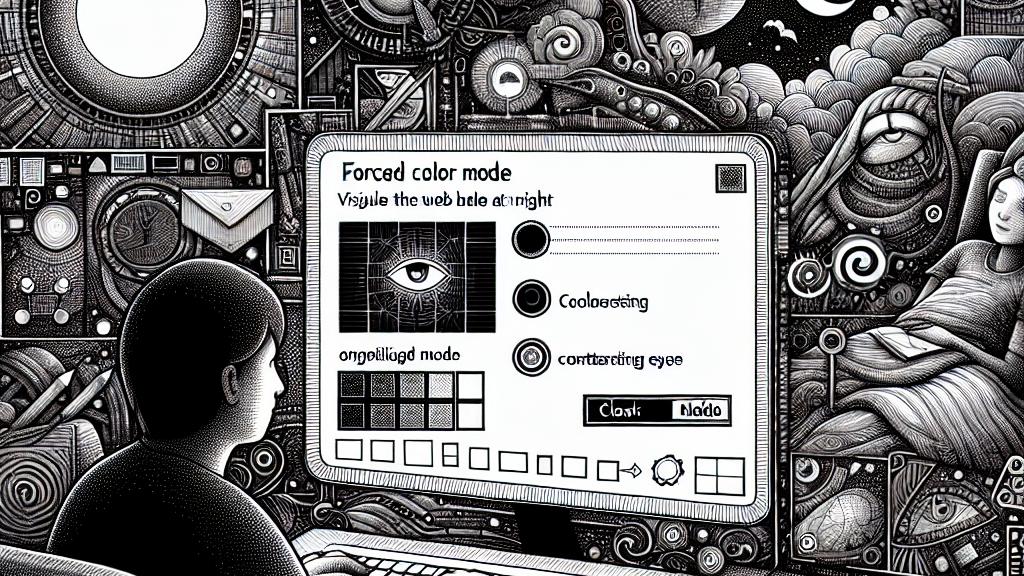Enhancing Daily Web Experience through Accessibility Tools
Overview
- Discover the transformative power of forced color mode to improve text readability for all users.
- Explore the impact of specific CSS properties and real-world examples that underscore the importance of accessibility.
- Implement actionable strategies to seamlessly incorporate accessibility features into your web projects.

Introduction to Forced Color Mode
In recent years, there has been a noteworthy shift in Japan towards improving web accessibility, leading to the introduction of a fascinating feature called forced color mode. This essential tool pushes the boundaries of readability by forcing color adjustments based on user preferences or operating systems. Picture this: you’re browsing a website late at night, and suddenly, it shifts to a color scheme that feels easy on your eyes, reducing strain significantly. This can be a lifeline for individuals who have visual impairments or prefer higher contrast displays. By simply flipping a switch, forced color mode fosters a welcoming online environment for all users, highlighting the importance of inclusive web design.
The Consequences on CSS Properties with Real-World Examples
Forced color mode directly influences a range of CSS properties, including color, background-color, and borders, fundamentally altering how users interact with web content. For instance, consider the Windows high-contrast modes. Users may find that key interface elements, like Twitter’s icon buttons, can blend into their backgrounds, making them nearly invisible with certain settings. Imagine clicking on what should be a vibrant button, only to discover it’s lost in a color mix! Similarly, Zenn's sleek tabs can vanish behind a forced color backdrop, causing confusion for users trying to navigate. Fortunately, employing CSS properties such as 'forced-colors' allows developers to maintain the visibility of both essential and decorative elements. This way, the interface retains its intuitiveness, ensuring that users don’t struggle with basic navigation.
Effective Strategies to Enhance Accessibility
Successfully integrating accessibility strategies into web projects is both achievable and rewarding. Simple adjustments can create a monumental impact on usability! For example, utilizing the @media (forced-colors: active) CSS media query can dynamically change styles to suit users’ needs. Instead of relying solely on box shadows, buttons can be styled with defined borders during forced color mode, ensuring they stand out vividly. Furthermore, incorporating semantic HTML alongside ARIA roles not only augments the experience for users relying on assistive technologies but also enriches the overall navigation process. Together, these small yet significant steps shape your website into a more inclusive platform, allowing users from all walks of life to engage meaningfully. Ultimately, making web accessibility a priority transforms your online space into an inviting atmosphere, ensuring everyone feels valued and considered when interacting with your content.

Loading...